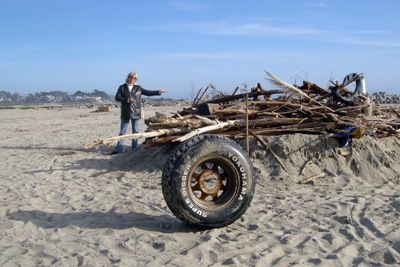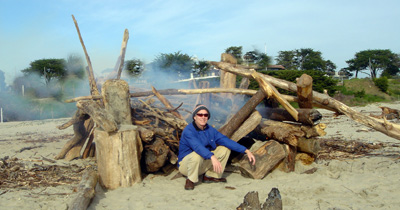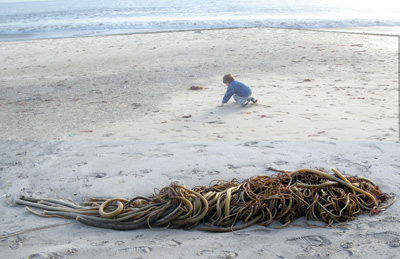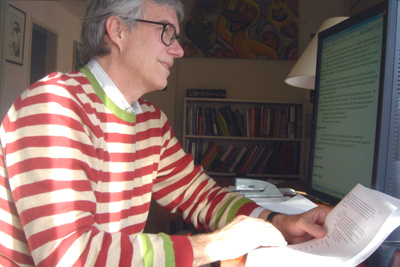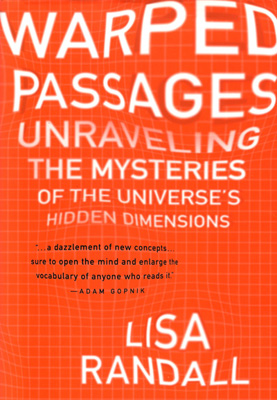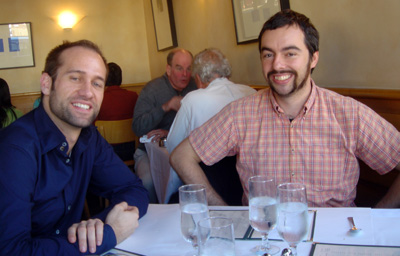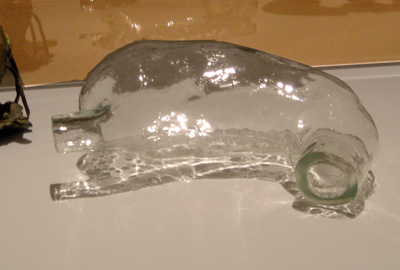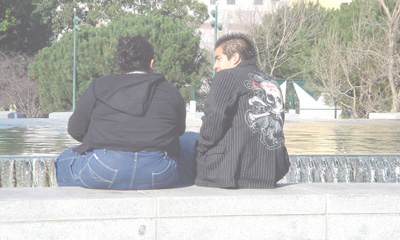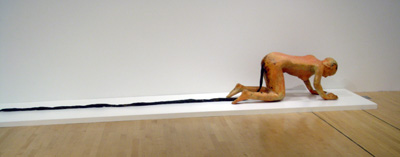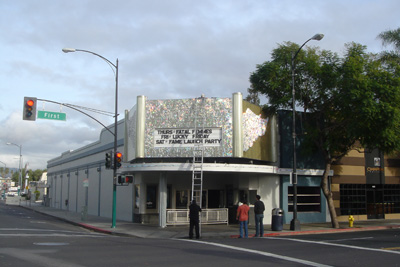
The other day we went to downtown San Jose and it was so boring there. Poor old San Jose. No matter what improvements the city tries, you can look down two, three, four blocks of sidewalk ahead and see nobody on it whatsoever.

I decided fuhgeddaboutit being a loyal San Jose booster and featuring it in my Postsingular novel. I was gonna set it in SJ, but, come on, I’m changing it to be in San Francisco where there’s some action.

[Sculpture in SJ Museum by someone living in Los Gatos.]
I read an article in the New Yorker about some kid in, like, Nebraska. His parents fell into the orbit of a “gifted children” counsellor (whom the article seems to depict as something of a con-woman) who told them their son had an IQ of 182 — although apparently the numbers don’t mean much when you get past 170.
And the parents flipped out over that number, and didn’t let him go to school with other kids, feeling it would be too “slow” for him, as if school were about learning facts instead of being about socialization and getting the hell out from under your parents’ eyes. And the poor kid got depressed and killed himself. Not that the suicide is necessarily the parents fault; it might well have happened no matter what they did. Brain chemistry gone awry. A sad story.

The relevance for my novel is that the article quotes some people nattering on about how very strange and different it is to have an unusually high IQ.

[Sculpture of “Dalilah” [sic] in the new SF De Young museum.]
My programmer friend John Walker suggests that IQ might more likely be proportional to the log of one’s brute processing power rather than being a linear function of it. So a thousandfold increase in processor power would make you only three times as smart.
That sounds right; just think of a desktop machines. A gigaflop machine isn’t a thousand times as good as a megaflop, it’s more like three times as good. So it would take a hundred-thousand-fold increase in brain power to get to five times as high an IQ, that is, to jump from a high end of IQ 200 to a high end of a thousand.

[Toon-like 20th C African mask in the new SF De Young museum.]
I’ll call the kiloIQ people “kiqqies”. I love the word kiqqie, it’s “kiddie” with some letters upside down. The kiqqie kiddies. Wow, Mom.
In my novel, I peg an individual human at the exa or 10^18 flop-and-byte level and the entire orphidnet at the ubba or 10^36 level. If IQ goes up as the log of the flop-and-byte, that’s an eighteen-fold amplification of normal IQ, which turns the usual IQ range of 100 to 200 into a range of 1800 to 3600. Two or three thousand for the IQ, in other words.

[Mexican ceramic of chihuahas mating, dated 300 BC to 300 AD in the SF De Young museum. Mexicans and chihuahuas go way back! I gotta put a chihuahua in my book to hang out with the Big Pig posse.]
So the beezies and the fully netted-in people are at the kiqqie level, and the Big Pig is just a few notches higher. I guess that makes sense. When I go to a guru, I’m wanting to see a guy only a few notches higher than me. Unless you're already a kiqqie, the Big Pig gonna seem too starkly incomprehensible.

[More two-thousand-year-old chihuahas. Such marvelous intelligence shows in this work. We imagine we've advanced so much in 2000 years, but really so little has changed.]
I need to put some effort into codifying what it is that makes a high IQ person different from others, so that I can do some analogies to push out to imagine life for the superintelligent AI beezies or for the enhanced humans plugged into the orphidnet.
This is a topic that people totally want to read about. An itchy fascination with what it is you might be missing. Lifestyles of the Rich and Famous. Mindscapes of the Kiqqies.
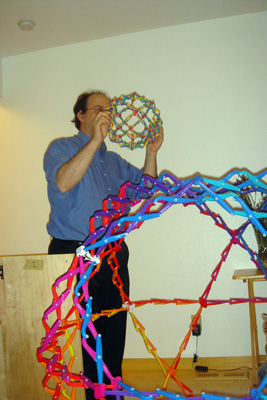
[My fellow mathemagician Nathaniel Hellerstein at home with his daughter’s toys.]
Certainly having serenity and feeling content has nothing to do with high IQ. Serenity is all about valving down the logical machinations and the memory accesses. So that baseline feeling will be the same even for the kiloIQ and megaIQ people. Just sensing your breath.
Yet, part of the meditative slack feeling is being open to inputs from all over the body or all the senses. And this would be richer for the kiqqies
Parallel trains of thought and extra associations would be kiqqie. Extra branches in the thought tree. Anticipating ideas. Modeling behaviors. Drawing conclusions.











